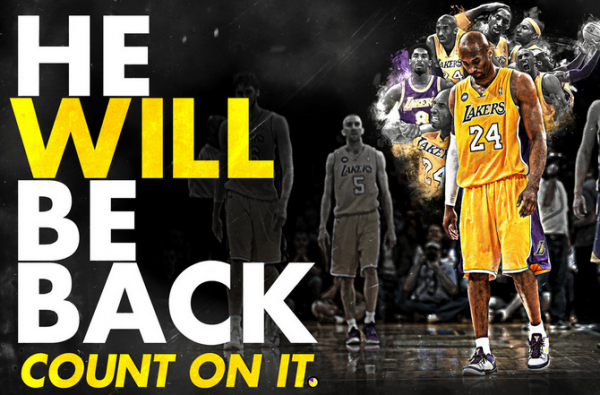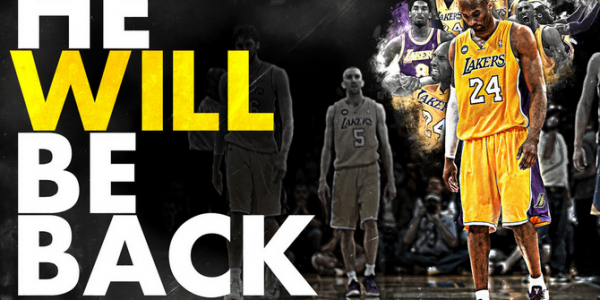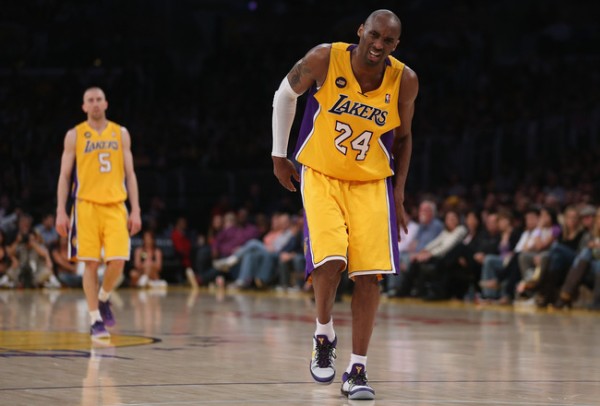At the center of whatever it is the Los Angeles Lakers think they can achieve next season lies the ability of Kobe Bryant, at the age of 35, with nearly 1500 regular season and playoff games behind him, to get over an Achilles Tendon tear and be good enough to carry the team just like he has in the past.
But it’s not just the hopes of Bryant being every bit as good as he was last season, averaging 27.3 points per game while shooting a very impressive 46.3% from the field. There is Pau Gasol, and the assumption that without a dominant big man playing next to him and a summer to rest in he’ll be back to his All-Star form.
There is Steve Nash, who might actually be healthier than he was last season, and suddenly play like the guy the Lakers expected when they signed him on a three-year deal worth $28 million, carrying him into his 40’s.
And there’s this hope that Mike D’Antoni suddenly figures out what to do with these players, and everything suddenly clicks. With Jordan Farmar coming off the bench and allowing Steve Blake to play a little bit off the ball instead of making point guard decisions, while Nick Young and Wesley Johnson will suddenly stop being disappointments and perform above their level so far in the NBA just because they’re playing for the Lakers.
But that is fan dreaming. Reality is a lot harsher. The Lakers won’t tank, as seen by their decision to amnesty Metta World Peace and not Pau Gasol or Kobe Bryant, which means they think they can make the postseason. Unfortunately, all this planning and thinking ahead depends on Bryant being, well, something he hasn’t been in a while.
Even if Bryant does score 27-28 points per game, it doesn’t necessarily make the Lakers better. The only difference from last season? There is one less dominant player to give up the ball to, so Bryant has the excuse of “I have no one to play with” ready when he pulls of seven consecutive games of taking more than 25 shots. When Bryant averaged over 30 points per game for the Post-Shaq Lakers, he was on a bad team. But he had the legs and youth to make it work. This time? Not so much of both.

But the harsher reality hits some in the face when you take a look at two important factors: The rosters in the West, with a very long list of teams waiting to make the playoffs, and about five-six of them looking like locks for the postseason; and the Lakers’ ability to play defense, which was bad last season, and might be even worse this year.
The Thunder, Spurs, Rockets, Clippers, Grizzlies, Warriors and Nuggets are teams that it’s very hard to see not making the postseason. That leaves the Blazers, Mavericks, Timberwolves and Pelicans to compete with. All these four teams are as deep as the Lakers. They might not have Kobe Bryant, but they have a lot more around their other stars.
And then there’s defense. Bryant is one of those players that once he plays intense D, the entire team follows and reacts accordingly. But when that happens around 10 times a season, it’s not enough. Without a head coach that knows what to do without the ball, and a team that’s weak in the middle (Chris Kaman is a terrible defender) as it is on the perimeter, losing early and often, which was surprising last season, isn’t going to be that much of a shock next season, even if Bryant doesn’t show a hint of post-injury syndrome or old age.


